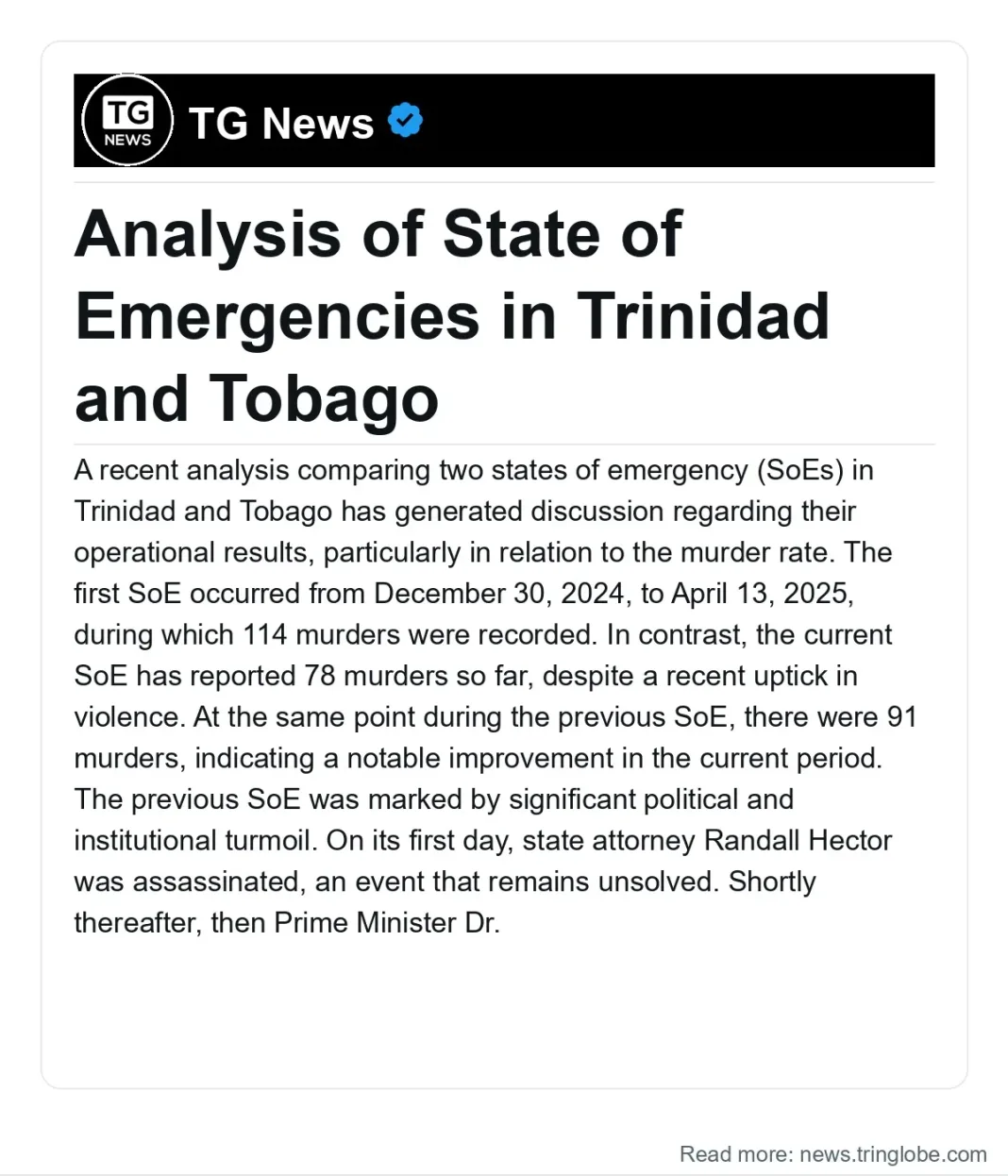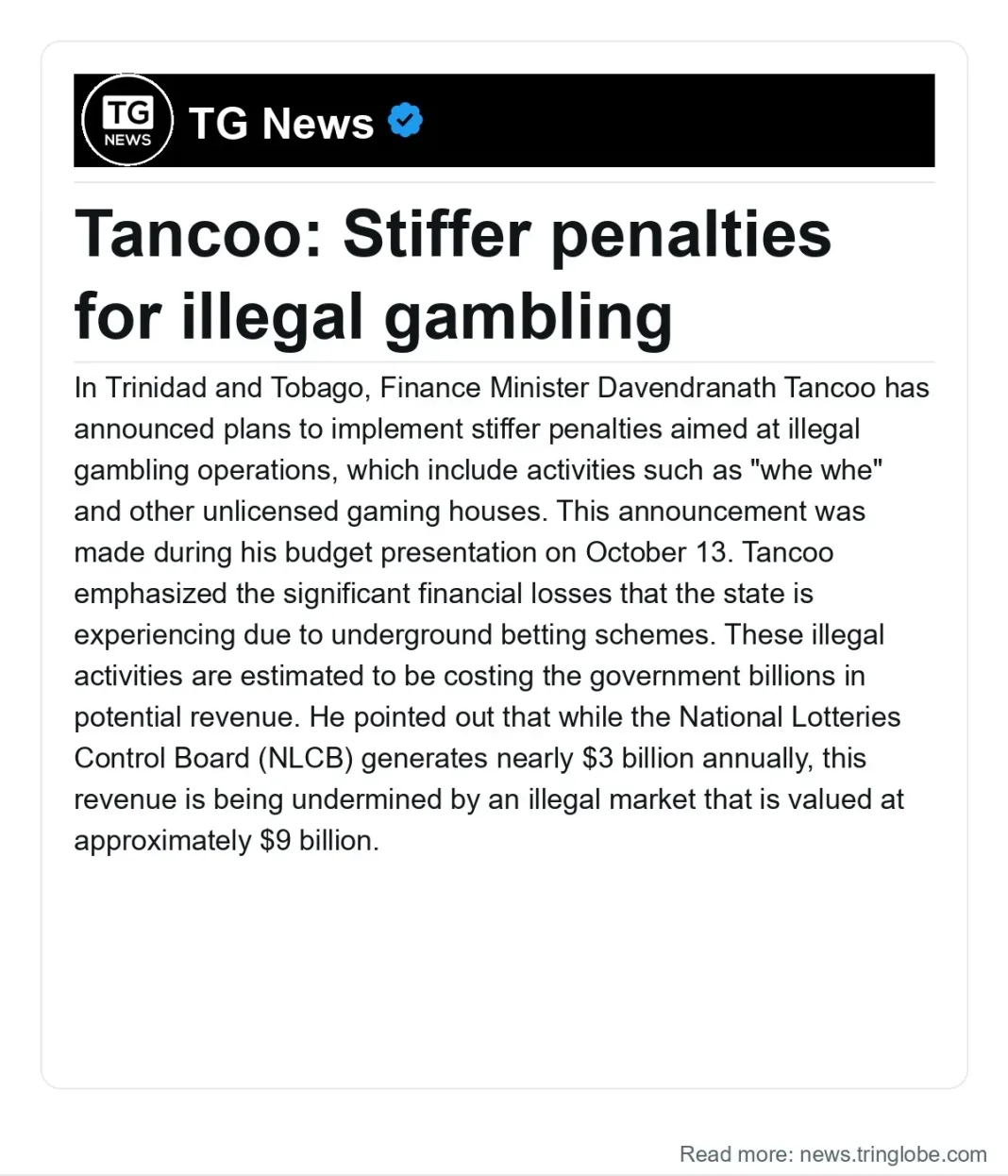This report covers trinidad tobago: analysis state with key details and context.
A recent analysis comparing two states of emergency (SoEs) in Trinidad and Tobago has generated discussion regarding their operational results, particularly in relation to the murder rate. The first SoE occurred from December 30, 2024, to April 13, 2025, during which 114 murders were recorded. In contrast, the current SoE has reported 78 murders so far, despite a recent uptick in violence. At the same point during the previous SoE, there were 91 murders, indicating a notable improvement in the current period.
The previous SoE was marked by significant political and institutional turmoil. On its first day, state attorney Randall Hector was assassinated, an event that remains unsolved. Shortly thereafter, then Prime Minister Dr. Keith Rowley announced his intention to resign, creating confusion and speculation during a time when stability was crucial. This announcement was followed by internal strife within the ruling party, the People’s National Movement (PNM), as Rowley intended for Stuart Young to succeed him without a formal election.
trinidad tobago: analysis state: key developments so far.
Additionally, the arrest of then Commissioner of Police Erla Harewood-Christopher further contributed to the chaos, as she was suspended without evidence and released shortly after. This series of events led to a perception of instability and inefficacy during the first SoE.
In contrast, the current SoE has been characterized by stability and effectiveness. Reports indicate a 22% decrease in violent crimes and a 15% reduction in serious crimes compared to the previous year. The current administration appears to be managing the situation more effectively, focusing on crime reduction without the political instability that plagued the previous SoE.
As the analysis continues, stakeholders are observing the outcomes of the current SoE with interest, particularly in light of the contrasting circumstances surrounding the previous one. The effectiveness of law enforcement and the government’s approach to crime during this period will likely be a focal point for future discussions and evaluations.
In summary, the comparison of the two SoEs in Trinidad and Tobago reveals significant differences in murder rates and the political environment. While the first SoE faced considerable challenges and turmoil, the current SoE has shown promising results in terms of crime reduction and stability. The ongoing analysis will provide further insights into the effectiveness of the measures implemented during this period.
Join the Trinidad and Tobago WhatsApp update group: https://chat.whatsapp.com/DKueX7ZV35626FbOsKBt03

